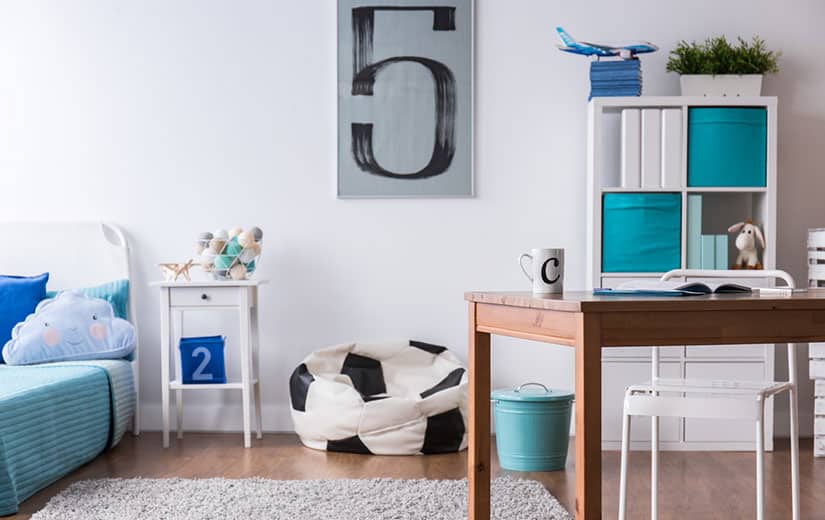The heating of a house represents an important item of expenditure within a household. It is therefore important to save energy, especially since it is advisable not to overheat a house. The French believe that the ideal average temperature to avoid being cold at home is 20°C. But what is it really? Find out what temperature in a house is recommended? And follow our tips and advice to cool or heat a room like the bedroom or the bathroom. And also find out about the regulations in force in terms of the average temperature in a house.
Summary
What does the temperature in a house depend on?
First, you should know that thermal comfort is difficult to define because it varies according to the occupant (age, state of health, etc.) or socio-cultural criteria.
Then, the temperature of a house largely depends on the mode of heating, but not only. Indeed, it is also necessary to take into account the level of insulation, the circulation of the air or the humidity level. These different criteria influence the feeling of well-being felt in a house or apartment.
The feeling of cold is therefore sometimes independent of temperature. In a room heated to more than 20°C, you can feel cold. This can be explained by the state of health, clothing, activity, circulation of air and humidity, if the walls are cold, by poorly insulated housing, etc.
What temperature in a house, room by room ?
The Ademe (Environment and Energy Management Agency) recommends ideal temperatures for each room in the house. These temperatures make it possible to reconcile thermal comfort and reduced energy expenditure. And this, in order to reduce its electricity or gas bill, and to minimize its impact on the environment.
Depending on the rooms of a house or an apartment, the needs are not the same:
- in living rooms such as the dining room, living room or kitchen, a temperature of 19°C is recommended. The Building and Housing Code also recommends this temperature in a house;
- As far as bedrooms are concerned, the ideal temperature is between 16 and 17°C because an overheated room can interfere with sleep. In a baby’s room, plan a room at 19°C;
- then, the other rooms such as the entrance, the toilets or the corridors can be heated to 17°C;
- on the other hand, if you have unoccupied rooms such as the pantry, leave the thermostat at 14°C. And in case of absence for more than 24 hours, lower the heating to 12°C;
- finally, to avoid catching cold when getting out of the bath, it is better to have a well-heated bathroom. Allow for a temperature range between 19 and 22°C in order to provide the necessary thermal comfort.
How to regulate the right temperature in the house? The necessary equipment
It is necessary to program the heating of the house in order to regulate the temperature in each of the rooms. To do this, you can install a thermostat or equip your radiators with thermostatic valves.
On the other hand, more expensive systems allow the heating to be programmed in order to reconcile thermal comfort and energy saving. One less degree can reduce your bill by -7%!
By using a timer, it’s easy to lower the temperature while you’re away. The heating will then be restarted automatically some time before your return so that the ambient temperature is satisfactory.
And the timer also allows the room to be warmed up by a few degrees when going to bed or getting up, for example. The system will also be useful in the bathroom because it is a room where you spend little time. Moreover, in this room, the installation of a towel warmer can replace the presence of a radiator. You will have an equivalent feeling of comfort at a lower cost.
Finally, the outside sensor measures the outside temperature and transmits it to your boiler which will then anticipate climate variations. It will therefore adapt the ambient temperature according to your needs.
Read also: I heat my house economically with the pellet stove
What temperature in a room to sleep well?
According to the National Institute of Sleep, a room at 18°C favors the natural regulation of our body temperature. Thus, when the room is at a temperature between 16 and 18°C, sleep and breathing are of better quality.
On the other hand, the sleep of a newborn is particular. You must be vigilant about maintaining the correct temperature in the room (19°C). Indeed, the first months, the thermal regulation of the baby is not yet operational.
In a room, it is advisable to ventilate. And to manage the temperature and keep it around 18°C, there are different tricks. You can air condition the room, use a fan to cool it. And to warm the room, use a heated electric blanket or a very warm duvet, and use hot water bottles when it’s cold.
To know : in a bathroom, there is also a solution to warm the room. Heat a towel with a towel dryer. This makes it possible to provide greater comfort via an extra degree of temperature, which also represents a saving.
Is there a legal average temperature in a house?
Few people know that. And yet, there is indeed a regulatory constraint in terms of average temperature. Thus, the Construction and Housing Code (articles R.111-6 and R.113-29) mentions an average temperature of 19°C in a dwelling.
This legal obligation in terms of temperature can be used by the occupants of a building to sue their trustee. And this, if they fail to reach the recommended temperature.
Indeed, it is the responsibility of the Syndic to give the occupants the means to obtain this average temperature. And that can be a good way to lower your bills. If the temperature in a dwelling is too high, tenants are overcharged.
Read also: Insulation: work needed?




